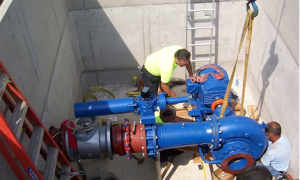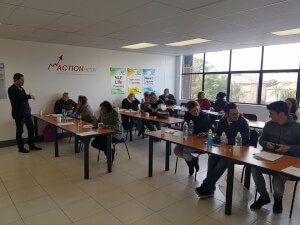The Zimbabwean rural dark nights are being lightened up daily by electricity. This has resulted in an increase in energy demand, thus various investment opportunities in Zimbabwe Energy sector. Energy has been an issue not only in Zimbabwe but the world over. However, this presents a lot of opportunities as Zimbabwe has potential to generate energy from various number of sources. The government of Zimbabwe through the Zim Asset has projected growth in Electricity and energy from 3.2% this year to 9.5% in 2018. These positive growth signs should raise a brow of everyone interested in Investing in Zimbabwe. The Zim Asset Paper is the word we all need which basically confirms the opportunity. Now it is up to the Investor to explore possibilities and exploit this idle opportunity. It is up to the energy gurus’ world over to adapt products that will work for Zimbabwe taking into account its potential energy sources, industry and lifestyle. The increasing demand of energy in Zimbabwe means energy cannot come from one source thus all energy sources from oil, gas, biomass, wind power industry, etc. should be exploited commercially to complement the existing sources of energy.
The opportunity exists
Than opportunity in power or energy exists in Zimbabwe is no secret. I believe the government is willing to have joint ventures with international Investors willing to Invest in Energy ventures. Calculating the projected return from the venture doesn’t break a sweat. Demand for energy in Zimbabwe is increasing whilst supply isn’t. Potential sources of energy are there. They only need exploitation. Some pilot projects e.g. on wind energy and other sources of energy have been carried out but are yet to be commercialized.
Using existing Infrastructure
Building an energy plant requires large sums of money however a little out of the box thinking may be the solution. The question that was asked was, why not use existing infrastructure with slight modifications to generate electricity at a cheaper coast?
An article by Heidi Vella stated, in a bid to harness the power from gallons of high pressured water that flows through a city’s water system every day, more and more local governments are exploring the possibility of in-pipe hydropower technology. Frank Zammataro, President of in-pipe hydropower company Rentricity, talks about the long-term potential of this burgeoning industry, its current challenges and cost-effectiveness.
In Harare, gallons of high pressure water flows around in pipes hidden underground, with a goal of providing clean water to thousands of homes and buildings. As the system goes through its daily labour, it produces an abundance of useable energy that, if not captured, is simply lost.
In the Western community, there is a small but burgeoning movement to harness this power and feed it into the national grid, creating clean, usable, renewable energy that would otherwise be wasted.
There is a New York-based company called Rentricity which is leading this new electric energy movement. It is amongst the first companies that have created the technology which can harvest power from high pressure water flowing pipes, known as ‘flow to wire’. This includes a reverse pump, a generator and controllers that can be installed at a water treatment plant or underground water system vaults that provide water to neighbourhoods.
The technology harnesses this highly pressured water, which typically goes through underground water utility substations, where its flow and pressure is reduced, in preparation to enter the smaller pipes of homes and businesses. The energy is then sold directly to the grid.
Calm down Zimbabwean – this is working in other places
Although not an entirely new concept – in 1985 Boulder in Colorado installed eight small scale hydroelectric generators in its municipal water system, which provides roughly 11% of the city’s electricity – its popularity is fast growing.
Last year, Scottish Water invested £20m in-putting in-pipe hydro in its water systems, at the beginning of this year Hong Kong announced it will install in-pipe hydro to its 7,880km of water pipes and around the same time New York City’s Department of Environmental Protection (DEP) said it was collecting proposals from consultants interested in assessing the hydroelectric potential of the city’s water systems.
But can this be an energy solution for Zimbabwe?
This energy solution requires a minimum of 250 gallons a day of consistent water flow. As such this can be used in industrial plants which use millions of gallons of water daily. The cost of installing the plant will cover and offset the electricity costs.







Hi all investors any one willing to invest in dubai. . Contact me alsaffar_1979@yahoo.co.uk
Thanks for the opportunity. email me on invest@www.ziminvestors.com. I have a list of interested intividuals